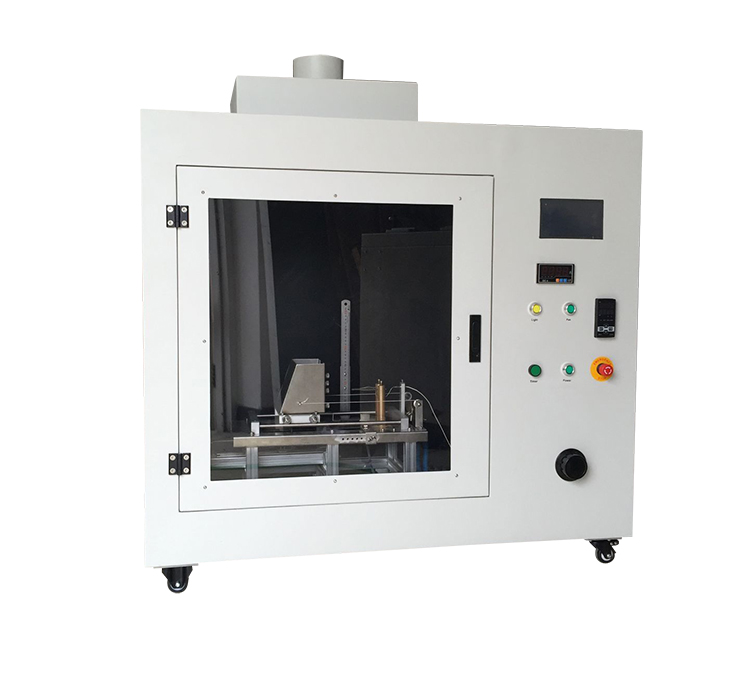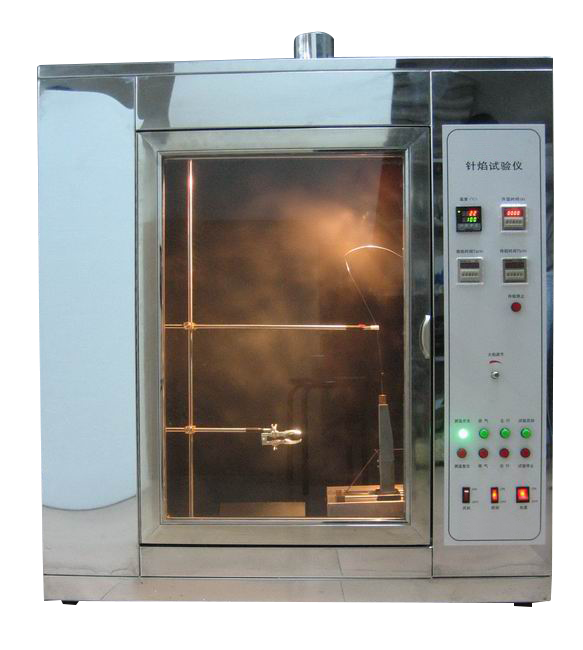
NewsInformation Center
What is the difference between glow wire test and needle flame test?
2023/10/27
The glow wire test and the needle flame test are both tests used to assess a material's resistance to flame, but they determine different fire ratings, characterising side by side how the material is likely to behave when faced with a fire situation.
The glow wire test and the needle flame test are two commonly used methods for assessing the burning behaviour and fire resistance of materials. They have some differences as described below:
1. test principle:
- glow wire test: The glow wire test is used to assess the fire behaviour of a material by touching a heated filament or wire to the surface of the material to be tested. When the temperature of the filament or wire reaches the material's ignition temperature, the material may burn, melt, drip, etc.
- Needle flame test: The needle flame test evaluates the burning behaviour of a material by touching a needle with a standard flame to the surface of the material to be tested. During the test, the material is observed to see if burning, delayed ignition, dripping, etc. occurs.
2. Purpose of the test:
- GLOW WIRE TEST: It is mainly used to assess the fire resistance and flame retardancy of the material, i.e. the burning characteristics of the material under the action of an ignition source. The results of this test can be used to select suitable materials, reduce the risk of fire, and design and manufacture flame retardant materials in the fields of construction, electrical and transport.
- needle flame test: It is mainly used to evaluate the burning performance and flammability of materials. By observing the burning characteristics of a material after contact with flame, the flammability and burning extensibility of the material is judged. This helps to determine the safety of the material under fire conditions and the potential risk to fire spread.
3. test conditions:
- GLOW WIRE TEST: In the test, a heated filament or wire is brought into contact with the surface of the material at a certain heating temperature and held in contact for a certain period of time. The temperature is usually specified in accordance with the standard, and the wire is observed during the test to see if it causes the material to burn or otherwise react adversely.
- needle flame test: In the test, the flame on the test needle is usually a standard flame source, such as a small flame applicator flame. After the needle flame has been in contact with the surface of the material for a certain period of time, the material is observed for burning, delayed ignition or dripping.
4. test evaluation:
- GLOW WIRE TEST: The glow wire test typically qualitatively or quantitatively evaluates the burning properties of a material. A qualitative assessment will record the duration of the material's burning, melting, dripping, etc. in contact with an ignition source. A quantitative assessment may measure the distance burned or melted, or record the temperature of the wire.
- Needle flame test: The needle flame test evaluates a material based primarily on its burning characteristics after contact with a flame. Parameters such as burning time, delayed ignition time, and dripping are usually recorded to assess the burning behaviour and fire resistance of the material.
When selecting the appropriate test method, the decision to use the glow wire test or the needle flame test should be made according to the specific application area and the requirements of the relevant standards.In addition, other standards and test methods for evaluating the combustion behaviour of materials can also be selected and applied according to specific needs.
Previous: China's share of EU textile and clothing market declines year on year
N e x t : Standard Test Methods for Stretch Properties of Fabrics Woven from Stretch Yarns





